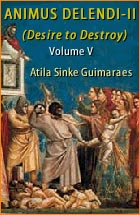Consequences of Vatican II
 |
 |
 |
 |
 |
 |
 |
The Progressivist Sect & Vatican II – Part II
False Equality & Fraternity Destroyed Authority
In my last article we saw how a revolutionaty liberty invaded the Church with the new customs promoted by the members of Catholic Action about 20 years before Vatican II. Now we will see how the revolutionary principles of equality and fraternity were applied in a way to destroy authority in the Church.
Equality
Our Lord Jesus Christ instituted the Church as a hierarchical society, with some to govern and others to obey. Naturally, this is not pleasing to the Progresivist Sect that infiltrated the Catholic Church.
Accordingly, as Prof. Plinio Corrêa de Oliveira points out in his book In Defense of Catholic Action, the progressivists put into play tactics that tended to level the clergy and the faithful. Thus, they took advantage of Pius XII ambiguous definition of Catholic Action as “the participation of the laity in the hierarchical apostolate of the Church.”
This was interpreted as if the laity enrolled in Catholic Action (CA) would have a part in the mission and task of the Hierarchy. They would no longer be mere subjects of the Hierarchy, but a kind of part of it. (1)
Further, the progressivists spread that the other Catholic groups of the lay apostolate – principally the Marian Congregations – were anachronistic and obsolete, on a secondary plane next to Catholic Action, which held a superior position due to its new ideas.
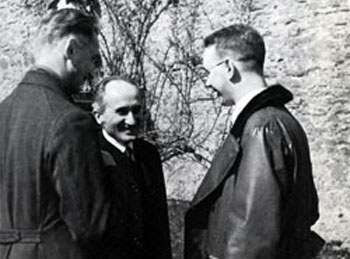 One error of those who maintained Catholic Action participates in the Hierarchy was the notion that women and men participate equally in the apostolate. This opened the door to women priests – forbidden by divine will – by instilling the revolutionary thinking that the Sacrament of Orders should also extend to women.
One error of those who maintained Catholic Action participates in the Hierarchy was the notion that women and men participate equally in the apostolate. This opened the door to women priests – forbidden by divine will – by instilling the revolutionary thinking that the Sacrament of Orders should also extend to women.
This egalitarianism also touched the teaching mission of the Church. In CA’s “study circles,” the authority of the professors was replaced by a self-managed teaching of an egalitarian and anarchist tone. Social and economic inequalities were debated in these circles, and the Marxist notion of class struggle was subtly inserted.
This inverted hierarchy of values produced other results, such as questioning the devotions to Our Lady and the Saints in the name of a spirituality that should be “theocentric, Christocentric and ecclesiocentric” - replacing an “outdated individual, selfish and male-dominated” one.
Personal devotions were also devalued – such as communion extra Missam [outside of Mass], visits to the Blessed Sacrament, the praying of the Rosary, etc. Such practices, it was asserted, would have given a misplaced priority to an “individualist and vertical” interior life. They should be replaced by a more valuable “communitarian and horizontal” prayer.
In the “social apostolate,” technical skills, professional competence and cultural formation were preferred to the mystical and supernatural fecundity of the Church.
Primacy was given to the conversion of the “gentiles,” that is, heretics, atheists and public sinners rather than the perseverance and sanctification of the faithful.
The authentic elites were ignored in favor of the empty and depersonalized masses.
This lay movement saw the clerical influence decrease, especially if they were striving to sever or hinder the circulation of heretical tendencies in the milieu of the Catholic Action.
The subordination of the individuals, families, private and state institutions to the infallible Magisterium of the Church was disregarded. Instead, the action became geared toward adjusting, accommodating, reconciling and adapting to the neo-pagan world.
Through a “Christological re-dimensioning,” a change was made in the notion of the pastoral, liturgy, history, biblical studies, philosophy and theology. Also, the progressivists revolutionized morals, laws, customs, and Church disciplines and vocabulary.
Ultimately, it knocked down the Church’s structure of authority.
Fraternity
Revolutionary fraternity denies almost everything that legitimately separates, divides, distinguishes and singles out men.
In the case of Catholic Action, this became evident in the unfortunate “common ground” tactic, which consisted of being silent on issues where there were differences and over-emphasizing vague points of similarity with the followers of other creeds or atheists for the purpose of the “apostolate of conquest.”
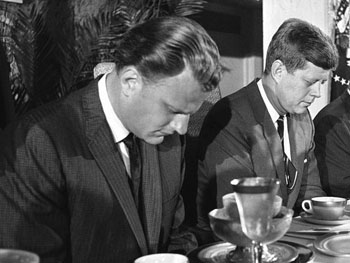 This proselytizing technique utilizing an ambiguous terminology did not convert others, and even less did it edify the best sons and daughters of the Catholic Church. Instead, it jeopardized the fidelity of Catholics, exposing them to the fatal risks of a convergent ecumenism and inter-confessionalism.
This proselytizing technique utilizing an ambiguous terminology did not convert others, and even less did it edify the best sons and daughters of the Catholic Church. Instead, it jeopardized the fidelity of Catholics, exposing them to the fatal risks of a convergent ecumenism and inter-confessionalism.
This apostolic strategy wrongly supposed that it would be simple and easy to convert those who held grave doctrinal errors, serious moral defects and bad intentions.
This lax attitude toward error was also reflected in the absence of prudence in relationships of men and women of different ages and social conditions. Further, it gave rise to unlimited concessions to the frenetic surge of new fashions and customs of the civilization of sin.
Polemics, accusations and anathemas against the heresies professed by the “separated brethren” were set aside, systematically replaced by the amenable smile, amiable words, and affirmations of some bland truths and consensual dialogue.
This ideological orientation, called “constructive,” also became an essential component of the “biblical movement.” It boycotted the numerous texts of Scripture considered “polemical,” “violent” and “punitive.”
Likewise, nothing was said about the difference of the Catholic Church from unbelievers, who were canonized as “men of good will.”
Thus, secular and pacifist mentalities became completely incapable of distinguishing right from wrong. What emerged was a new generation characterized by a petrified indifference to good and evil and accustomed to the habit of serving two masters (Lk. 16:13). It was said a person only needs to do good and not to combat or point out the evils of the time, especially if they are embodied in men who are worldly, incredulous, impenitent, heterodox or idolaters.
“Yes” to constructing and converting, but “no” to showing any severity toward souls lost in error and sin. “No” to confronting the enemies of the Church. ”No” to making distinctions between truth and error, beauty and ugliness, the sacred and the profane, virtue and sin. Metaphysical certainties were lost in the largely relativist mentality of a member of CA.
A new progressivist era
This sentimental and romantic conception of liberty-fraternity-equality preached by Progressivism and assimilated by CA led to a disastrous convergence of the partisans and opponents of the French Revolution and a senseless relationship between revolutionaries and Catholics.
The opening of such a “new era” is the logical result of accepting the motto of the French Revolution. This era is meant to be one that is inter-confessional, pacifist and willing to converge on everything.
All the barriers fall – religious, ideological, political, economic and racial. Everything leads to a harmonic reconciliation and fusion of religions, peoples, cultures, schools of thought and wealth. All the rules, norms and prohibitions are annulled.
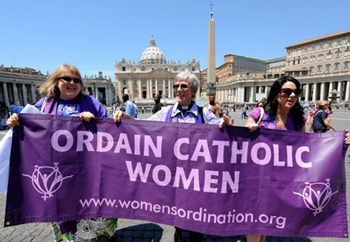 This cohesive and strong ideology of liberty-equality-fraternity explains the myths of unifying Catholics with Protestants, relaxing dogmatic and moral doctrines to justify the criminal manipulation of genetic laws. It is the union of Christ of the Apostles with the Allah of Mohammed, the synthesis of the capitalist and communist regimes.
This cohesive and strong ideology of liberty-equality-fraternity explains the myths of unifying Catholics with Protestants, relaxing dogmatic and moral doctrines to justify the criminal manipulation of genetic laws. It is the union of Christ of the Apostles with the Allah of Mohammed, the synthesis of the capitalist and communist regimes.
With no more discords, condemnations, clashes and fights, and following a single dictatorial direction, this neo-pagan world would know eternal peace and the universal abundance, finally realizing the old anti-Christian dream of the revolutionary utopists.
Vatican Council II
The greatest negative work of the Progressivist Sect in history was Vatican Council II.
Undoubtedly, it constituted a masterpiece from the point of view of insinuating the ideology of the French Revolution through an ambiguous vocabulary that magically transformed mentalities.
This same tactic was used by modernists and denounced by St. Pius X: “The modernists employ a very clever artifice, namely, to present their doctrines not with order and systematic arrangement into a single whole, but scattered and disjointed one from another, so as to appear to be doubtful and uncertain, while in reality they are firm and steadfast.” (2)
In another document St. Pius X advised: “We must protect the faithful from evil and error, especially when evil and error are presented in attractive language which, concealing vague notions and ambiguous expression with emotional and high-sounding words, can inflame the hearts of men with seductive – but nefarious – causes.” (3)
In reality, the trilogy of 1789 – liberty, equality, fraternity – has profoundly marked the Pastoral Constitution Gaudium et spes, which outlines a new approach of the conciliar Church toward the modern world born of the French Revolution.
This was admitted approvingly by Card. Joseph Ratzinger in 1985: “It [Gaudium et spes] plays the role of a counter-Syllabus to the measure that it represents an attempt to officially reconcile the Church with the world as it had become after 1789.” (4)
It is, indeed, the general spirit of Vatican Council II, confirmed by Henry Fesquet in 1985: “This glorious motto was, in short, that of Vatican II, as Hang Kung (in 1971) has recently suggested.” (5)
This overview provides the philosophical background of the Progressivist Sect and how it influenced Vatican II. There is still more to come.
Continued

Equality
Our Lord Jesus Christ instituted the Church as a hierarchical society, with some to govern and others to obey. Naturally, this is not pleasing to the Progresivist Sect that infiltrated the Catholic Church.
Accordingly, as Prof. Plinio Corrêa de Oliveira points out in his book In Defense of Catholic Action, the progressivists put into play tactics that tended to level the clergy and the faithful. Thus, they took advantage of Pius XII ambiguous definition of Catholic Action as “the participation of the laity in the hierarchical apostolate of the Church.”
This was interpreted as if the laity enrolled in Catholic Action (CA) would have a part in the mission and task of the Hierarchy. They would no longer be mere subjects of the Hierarchy, but a kind of part of it. (1)
Further, the progressivists spread that the other Catholic groups of the lay apostolate – principally the Marian Congregations – were anachronistic and obsolete, on a secondary plane next to Catholic Action, which held a superior position due to its new ideas.

Above center, Pe. Romano Guardini without a cassock in the '50s to appear like a layman; today the laity appear like priests, participating in the Consecration, below
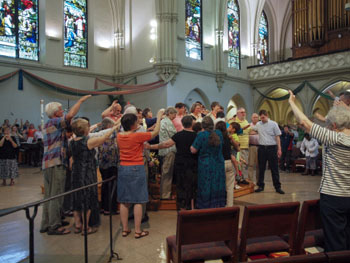
This egalitarianism also touched the teaching mission of the Church. In CA’s “study circles,” the authority of the professors was replaced by a self-managed teaching of an egalitarian and anarchist tone. Social and economic inequalities were debated in these circles, and the Marxist notion of class struggle was subtly inserted.
This inverted hierarchy of values produced other results, such as questioning the devotions to Our Lady and the Saints in the name of a spirituality that should be “theocentric, Christocentric and ecclesiocentric” - replacing an “outdated individual, selfish and male-dominated” one.
Personal devotions were also devalued – such as communion extra Missam [outside of Mass], visits to the Blessed Sacrament, the praying of the Rosary, etc. Such practices, it was asserted, would have given a misplaced priority to an “individualist and vertical” interior life. They should be replaced by a more valuable “communitarian and horizontal” prayer.
In the “social apostolate,” technical skills, professional competence and cultural formation were preferred to the mystical and supernatural fecundity of the Church.
Primacy was given to the conversion of the “gentiles,” that is, heretics, atheists and public sinners rather than the perseverance and sanctification of the faithful.
The authentic elites were ignored in favor of the empty and depersonalized masses.
This lay movement saw the clerical influence decrease, especially if they were striving to sever or hinder the circulation of heretical tendencies in the milieu of the Catholic Action.
The subordination of the individuals, families, private and state institutions to the infallible Magisterium of the Church was disregarded. Instead, the action became geared toward adjusting, accommodating, reconciling and adapting to the neo-pagan world.
Through a “Christological re-dimensioning,” a change was made in the notion of the pastoral, liturgy, history, biblical studies, philosophy and theology. Also, the progressivists revolutionized morals, laws, customs, and Church disciplines and vocabulary.
Ultimately, it knocked down the Church’s structure of authority.
Fraternity
Revolutionary fraternity denies almost everything that legitimately separates, divides, distinguishes and singles out men.
In the case of Catholic Action, this became evident in the unfortunate “common ground” tactic, which consisted of being silent on issues where there were differences and over-emphasizing vague points of similarity with the followers of other creeds or atheists for the purpose of the “apostolate of conquest.”

Before the Council it was rare to see Catholics praying with heretics, as above, Kennedy and Billy Graham; now, it is a common practice of the Conciliar Church, belowFrancis with Tawadros II
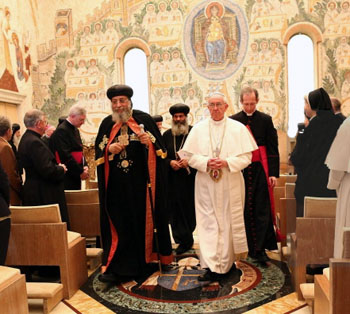
This apostolic strategy wrongly supposed that it would be simple and easy to convert those who held grave doctrinal errors, serious moral defects and bad intentions.
This lax attitude toward error was also reflected in the absence of prudence in relationships of men and women of different ages and social conditions. Further, it gave rise to unlimited concessions to the frenetic surge of new fashions and customs of the civilization of sin.
Polemics, accusations and anathemas against the heresies professed by the “separated brethren” were set aside, systematically replaced by the amenable smile, amiable words, and affirmations of some bland truths and consensual dialogue.
This ideological orientation, called “constructive,” also became an essential component of the “biblical movement.” It boycotted the numerous texts of Scripture considered “polemical,” “violent” and “punitive.”
Likewise, nothing was said about the difference of the Catholic Church from unbelievers, who were canonized as “men of good will.”
Thus, secular and pacifist mentalities became completely incapable of distinguishing right from wrong. What emerged was a new generation characterized by a petrified indifference to good and evil and accustomed to the habit of serving two masters (Lk. 16:13). It was said a person only needs to do good and not to combat or point out the evils of the time, especially if they are embodied in men who are worldly, incredulous, impenitent, heterodox or idolaters.
“Yes” to constructing and converting, but “no” to showing any severity toward souls lost in error and sin. “No” to confronting the enemies of the Church. ”No” to making distinctions between truth and error, beauty and ugliness, the sacred and the profane, virtue and sin. Metaphysical certainties were lost in the largely relativist mentality of a member of CA.
A new progressivist era
This sentimental and romantic conception of liberty-fraternity-equality preached by Progressivism and assimilated by CA led to a disastrous convergence of the partisans and opponents of the French Revolution and a senseless relationship between revolutionaries and Catholics.
The opening of such a “new era” is the logical result of accepting the motto of the French Revolution. This era is meant to be one that is inter-confessional, pacifist and willing to converge on everything.
All the barriers fall – religious, ideological, political, economic and racial. Everything leads to a harmonic reconciliation and fusion of religions, peoples, cultures, schools of thought and wealth. All the rules, norms and prohibitions are annulled.

Women campaigning to be accepted as priests
With no more discords, condemnations, clashes and fights, and following a single dictatorial direction, this neo-pagan world would know eternal peace and the universal abundance, finally realizing the old anti-Christian dream of the revolutionary utopists.
Vatican Council II
The greatest negative work of the Progressivist Sect in history was Vatican Council II.
Undoubtedly, it constituted a masterpiece from the point of view of insinuating the ideology of the French Revolution through an ambiguous vocabulary that magically transformed mentalities.
This same tactic was used by modernists and denounced by St. Pius X: “The modernists employ a very clever artifice, namely, to present their doctrines not with order and systematic arrangement into a single whole, but scattered and disjointed one from another, so as to appear to be doubtful and uncertain, while in reality they are firm and steadfast.” (2)
In another document St. Pius X advised: “We must protect the faithful from evil and error, especially when evil and error are presented in attractive language which, concealing vague notions and ambiguous expression with emotional and high-sounding words, can inflame the hearts of men with seductive – but nefarious – causes.” (3)
In reality, the trilogy of 1789 – liberty, equality, fraternity – has profoundly marked the Pastoral Constitution Gaudium et spes, which outlines a new approach of the conciliar Church toward the modern world born of the French Revolution.
This was admitted approvingly by Card. Joseph Ratzinger in 1985: “It [Gaudium et spes] plays the role of a counter-Syllabus to the measure that it represents an attempt to officially reconcile the Church with the world as it had become after 1789.” (4)
It is, indeed, the general spirit of Vatican Council II, confirmed by Henry Fesquet in 1985: “This glorious motto was, in short, that of Vatican II, as Hang Kung (in 1971) has recently suggested.” (5)
This overview provides the philosophical background of the Progressivist Sect and how it influenced Vatican II. There is still more to come.
- Plínio Corrêa de Oliveira, In Defense of Catholic Action online, p. XIII
- Encyclical Pascendi Dominici Gregis, September 8, 1907
- Apostolic Letter Notre Charge Apostolique, August 15, 1910
- Apud Átila Sinke Guimarães, Nas águas turvas do Vaticano II, Coleção Eli, Eli, Lamma Sabachtani?, Volume I, Scor Editora Tecci, 1999, p. 261; In the Murky Waters of Vatican II, TIA, 2nd ed., pp. 255-256, nn. 57e.
- In the Murky Waters of Vatican II, p. 83, n. 13a

Posted June 21, 2013
______________________
______________________







